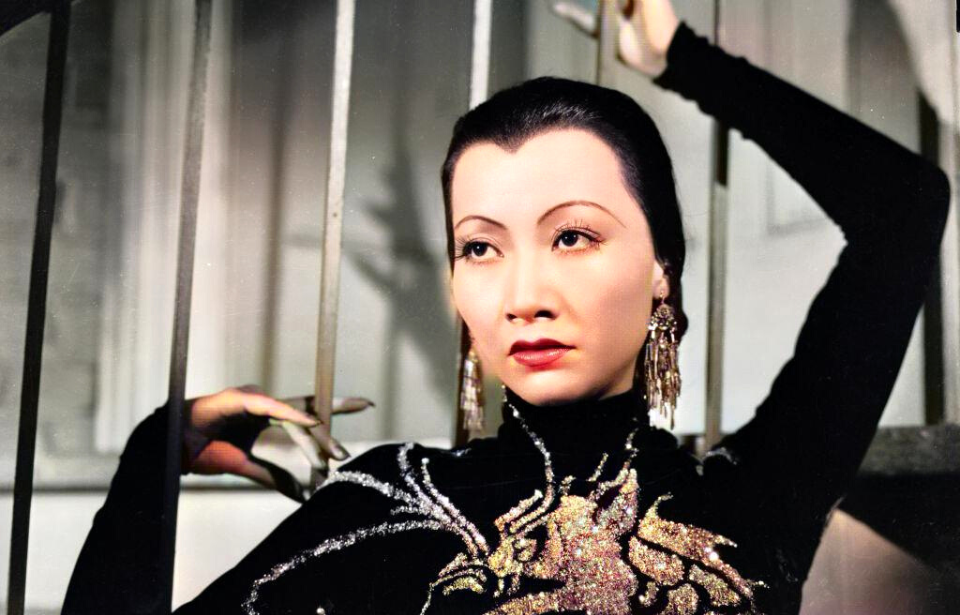Each May, people around the world celebrate Asian American and Pacific Islander Heritage Month! Let’s take a look at ten incredible Asian-American actors and artists who brought Asian heritage to the silver screen in the golden age of Hollywood.
Bruce Lee
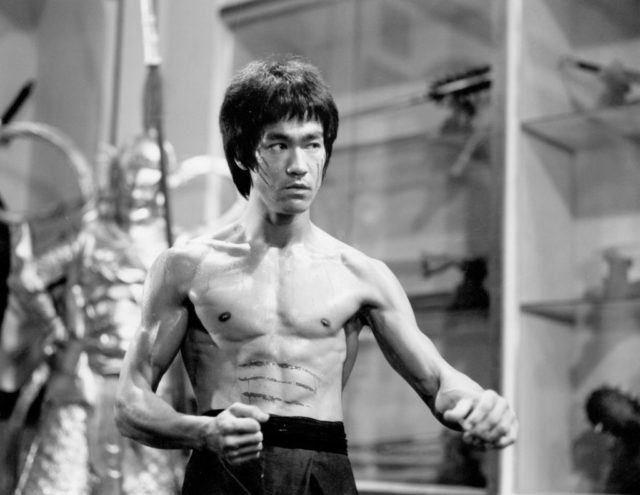
Renowned martial artist Bruce Lee was born in San Francisco in 1940 but raised in Hong Kong, where he was actually a child actor before studying kung fu. At 18 years old, Lee moved to Washington, Seattle, and studied philosophy at the University of Washington. In his spare time, he taught kung fu at his very own school, the Jun Fan Gung Fu Institute.
While at an exhibition in California, Lee was discovered by a talent agent and offered a role in the TV series The Green Hornet. Lee returned to Hong Kong and starred in three films before returning to Hollywood to star in Enter the Dragon. Sadly, Lee died after a reaction to prescription pain killers in 1973 before the film was released. Lee has inspired the martial arts movement around the globe, and his legacy lives on in his films and his contributions to Asian representation in American cinema.
Nancy Kwan
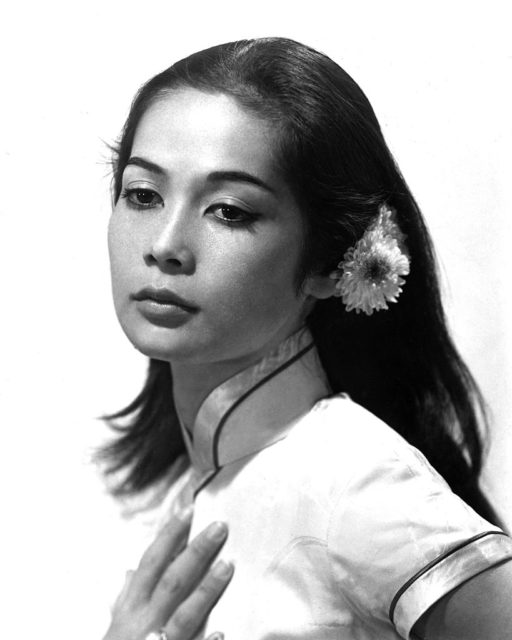
One of the first self-made Asian actors to rise to fame in a leading film role, Nancy Kwan is still considered a Hollywood pioneer for Asian representation. Kwan is an accomplished actress, dancer, and philanthropist born in Hong Kong during the start of World War II. Learning about tai chi inspired Kwan to become a ballet dancer at a young age, eventually attending the Royal Ballet School in London.
Kwan landed her first movie role as the title character in The World of Suzie Wong. Her knockout performance became an overnight sensation, even landing her the nickname the “Chinese Bardot.” Other films, like Flower Drum Song, cemented her celebrity status at just 22 years old in 1962.
Later on, Kwan would become an outspoken advocate for AIDS awareness and research following the death of her son, who lost his battle with HIV in 1996.
Keye Luke
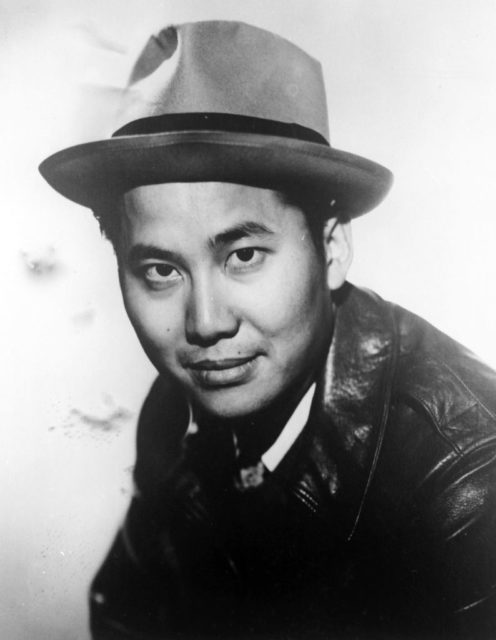
Keye Luke was born Lù Xīqí in Guangzhou, China on June 18, 1904. Best known for playing Lee Chan in the Charlie Chan film franchise and for originating the role of Kato in The Green Hornet (later reprised by Bruce Lee), Luke made history as the first Chinese-American actor signed by RKO, Metro-Goldwyn-Mayer and Universal Pictures. He was also one of the founding actors of the Screen Actor’s Guild.
After his film debut in the 1934 film The Painted Veil, Luke landed the role of the oldest Chan sibling in the Charlie Chan films. Luke had over 200 film and TV credits over his 60-year career before his death in 1991.
Anna May Wong
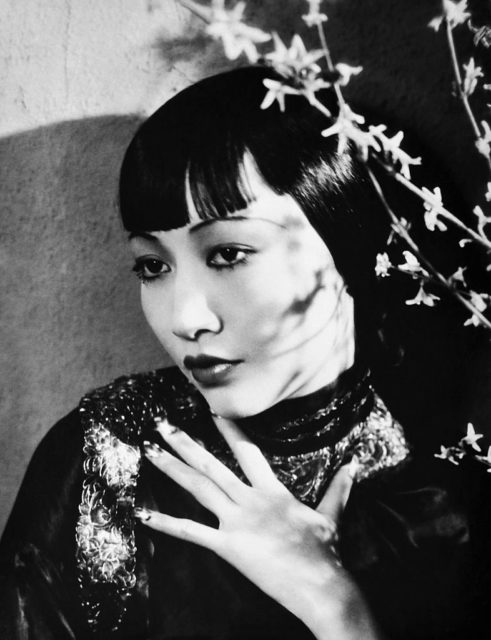
Anna May Wong was one of the first Asian Hollywood starlets, landing leading roles in classic 1930s films like Piccadilly, Daughter of the Dragon, and Shanghai Express. Even though Wong was a successful actress, stereotyping and racial discrimination in the industry affected her career and the roles she was given – but she often spoke out against racism in the film industry.
When asked to audition for a role in The Good Earth, which centers around a Chinese family, Wong was furious to learn that she was the only Chinese actor offered a part – the remaining cast were all white actors “yellowface.” Wong retired from acting in 1942 but continued to appear in minor TV and film roles – she was especially excited to act in Flower Drum Song with Nancy Kwan, but Wong passed away from a heart attack before filming began.
Sessue Hayakawa
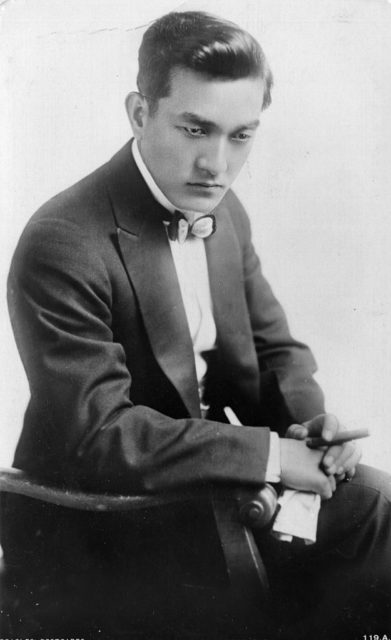
The dashing Sessue Hayakawa won over Hollywood as a silent film star in the 1910s and 1920s. Born in Japan, Hayakawa was one of the first Asian actors to achieve stardom in the United States. Often given the role of the broody, dominant villain – which was sadly due to typecasting and racial stereotypes – Hayakawa was considered to be a major heartthrob and sex symbol to American women.
Hayakawa spoke out about Japanese stereotypes in the movie industry, especially since American films were portraying Japanese people as villains to promote anti-Japanese sentiments during WWI and WWII. In his later life, Hayakawa returned to Japan where he died in 1973.
Tsuru Aoki
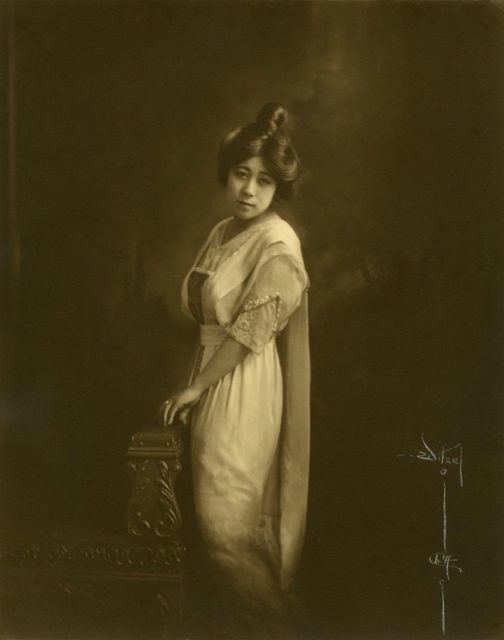
Not only was Tsuru Aoki a famous actress, but she was also the wife of Sessue Hayakawa! Before her husband became a renowned name in Hollywood cinema, Aoki starred in silent films as early as 1915. Aoki immigrated to America from Japan in 1903, settling in San Francisco with her aunt and uncle.
Aoki starred in over 45 films throughout the 1910s and 1920s. She starred in many famous films of the silent era, including The Dragon Painter, The Breath of the Gods, The Vigil, and The Geisha. She also often appeared in films opposite her husband Sessue Hayakawa.
Miyoshi Umeki
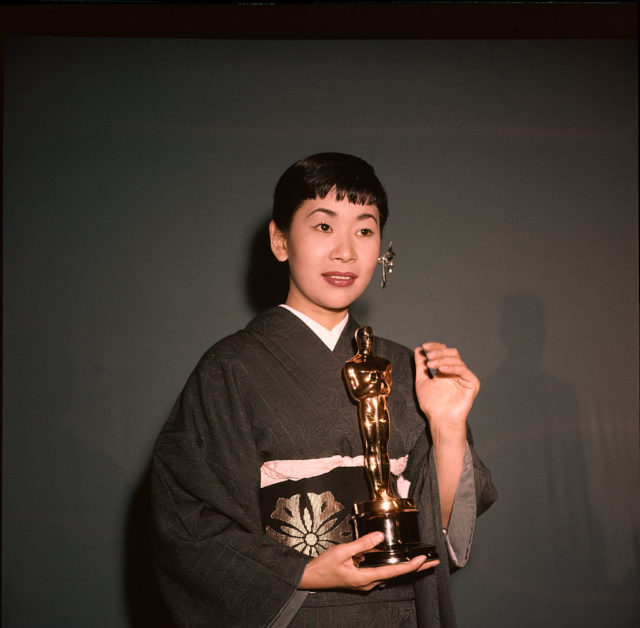
Japanese American actress Miyoshi Umeki was the first East Asian person to ever win an Academy Award for acting for her role as Katsumi in the 1957 film Sayonara. Umeki was also an accomplished singer who was influenced by Japanese kabuki theater and American pop music.
Her love 0f theater was a huge part of her career, she was nominated for a Tony Award for Best Actress in a Leading Role during the Broadway production of Flower Drum Song, she also made an appearance in the film adaptation of the show alongside Nancy Kwan. Umeki retired to Missouri to be closer to her son and three grandchildren. She died from cancer at age 78.
George Takei
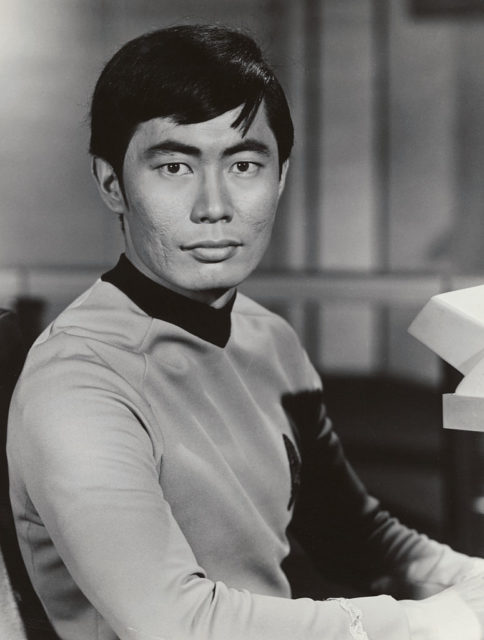
Star Trek actor George Takei was born to Japanese-American parents on April 20, 1937. Takei’s early life was especially difficult as an Asian American during World War II. During this period, thousands of Asian Americans, including Takei and his family, were forced to live in US-run internment camps. Before landing his breakout role as Mr. Sulu in the classic Star Trek series, Takei worked as a voice actor and also appeared in small roles in classics like The Twilight Zone and Mission: Impossible.
Takei is still a devoted member of the Trekkie community. Takei also made history in 2005 when he publicly came out as gay. He continues to be an advocate and activist for LGBTQ+ representation.
Merle Oberon
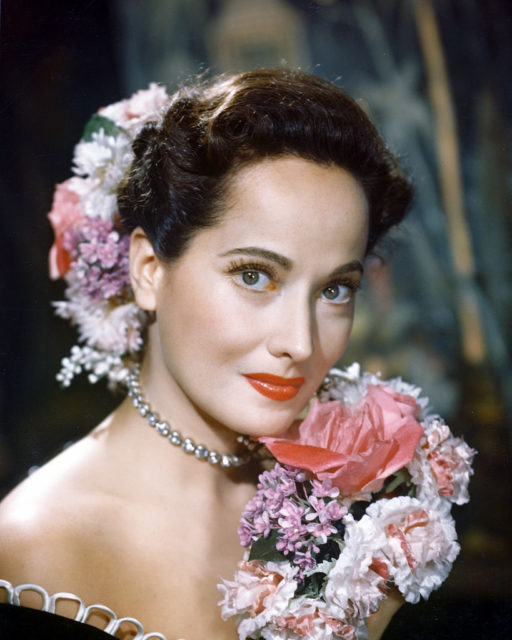
Merle Oberon was born in Bombay, India in 1911 to a British father and Sri Lankan-Maori mother. She often hid her mixed South Asian and Indigenous ancestry by claiming she was born in Tasmania and that her birth records were destroyed in a fire. She likely concealed her true identity to avoid discrimination and type-casting.
Oberon landed her first major film role as Anne Boleyn in the 1933 film The Private Life of Henry VIII. She also starred opposite Laurence Olivier in the 1939 film adaptation of Wuthering Heights. It wasn’t until after her death in 1979 that the truth about her ethnicity and origin unraveled. Not only was Oberon born in India, but her birth mother was actually her sister who had Oberon at just 12 years old.
James Shigeta
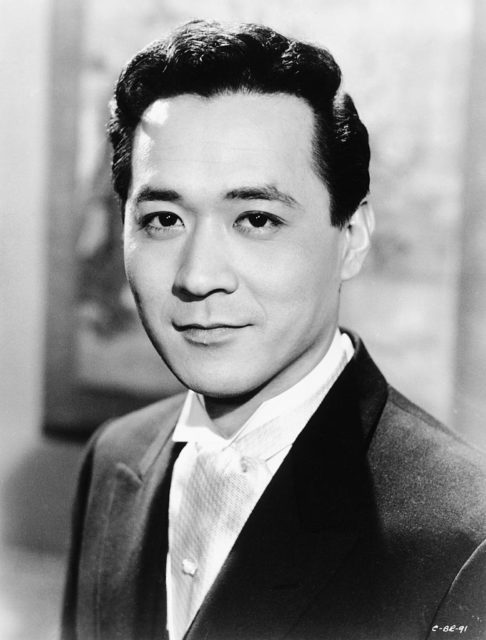
James Shigeta and his rich baritone voice won over audiences throughout the 1960s and beyond. Born in Hawaii in 1929 to second-generation Japanese parents, Shigeta is still celebrated today as one of the most famous Asian Americans in Hollywood. Shigeta is most known for his roles in classics like Flower Drum Song (starring alongside Nancy Kwan and Miyoshi Umeki), The Crimson Kimono, Bridge to the Sun, and even newer favorites like Die Hard and Mulan.
More from us: A Rare Peek at Classic Hollywood Stars at Home
Shigeta’s success in the industry paved the way for many contemporary Asian actors. He was able to transcend stereotyping in many of his roles and overcame barriers to introduce audiences to realistic, multifaceted, and positive representations of Asian cultures in cinema.
